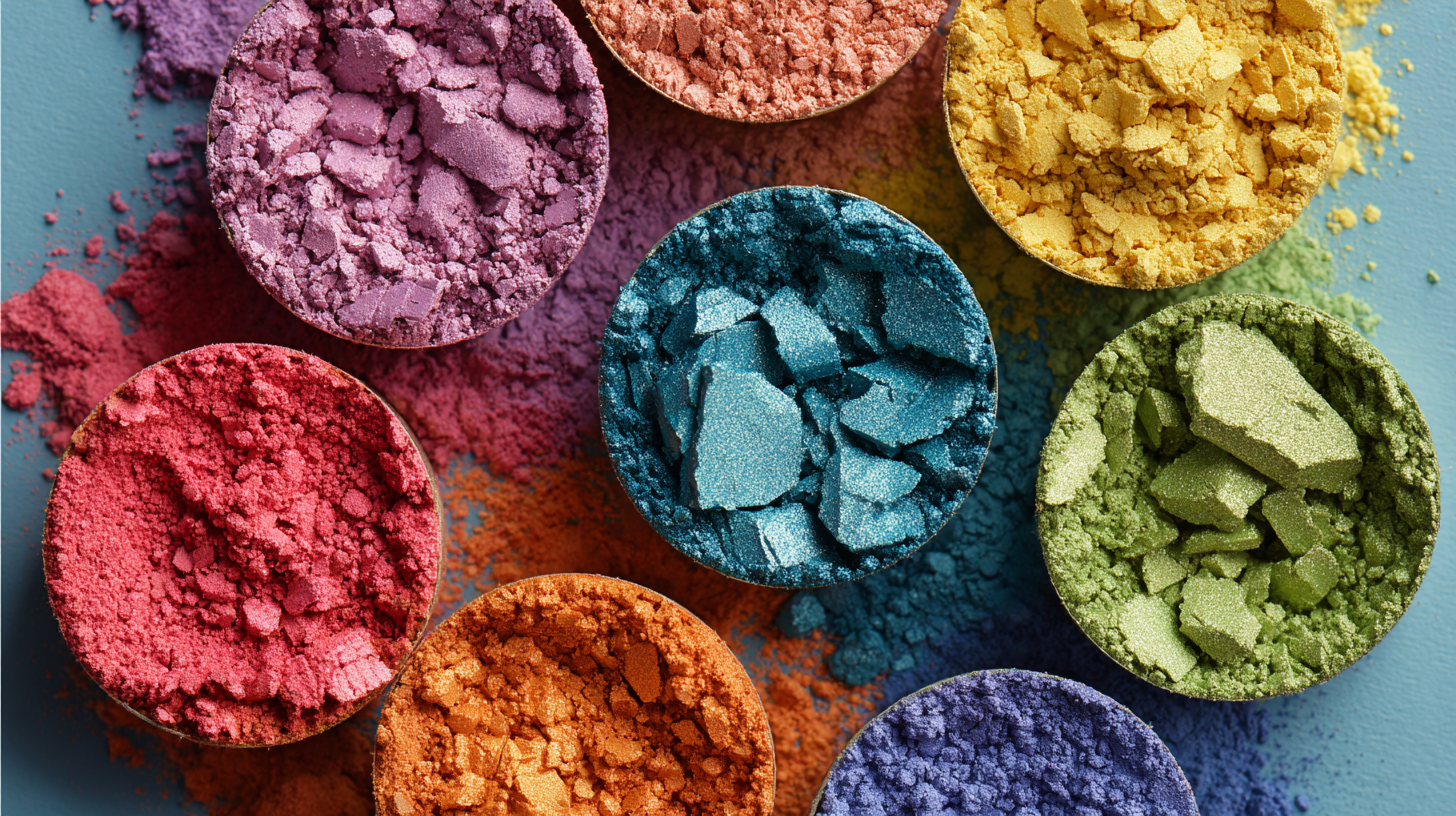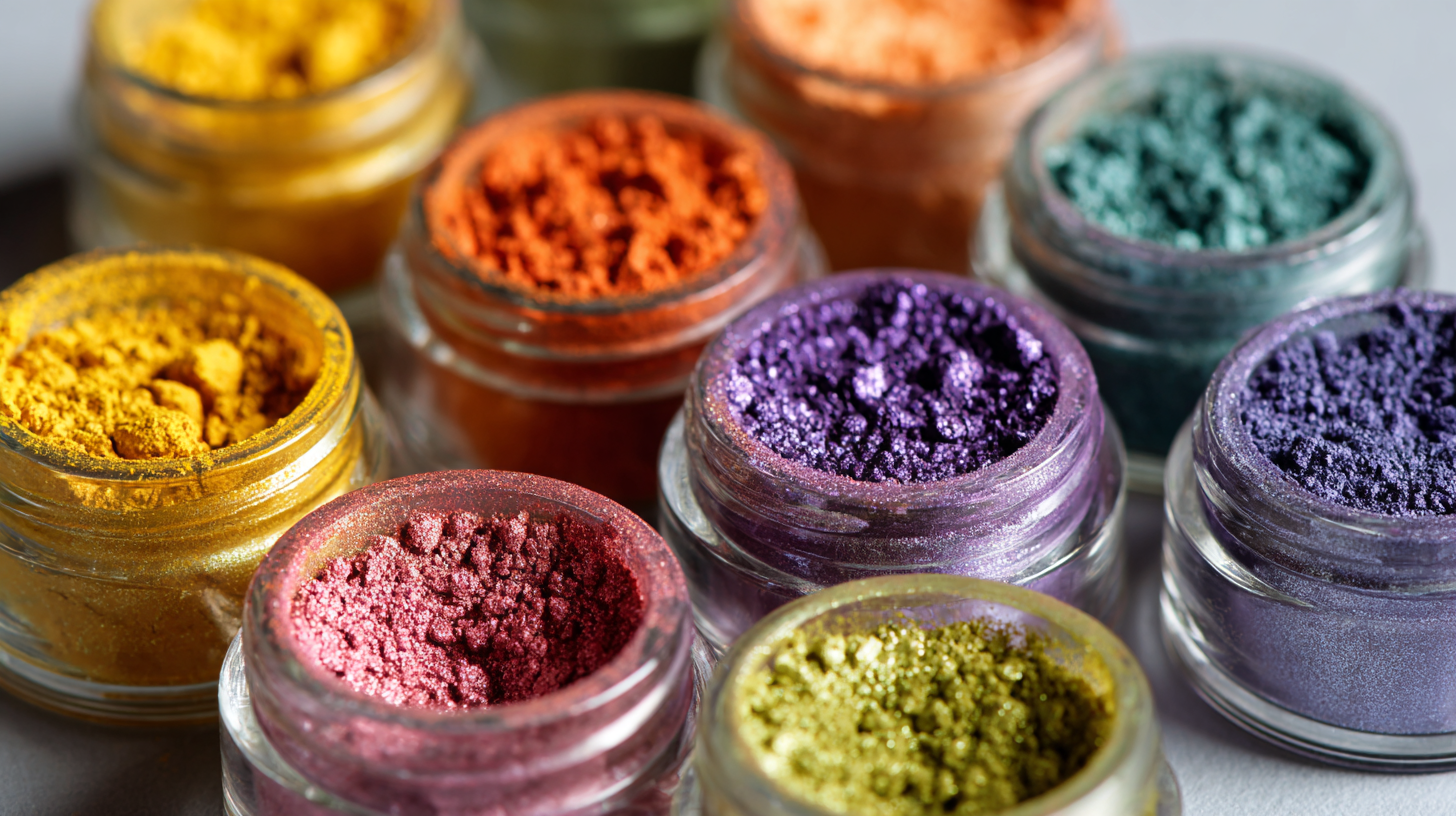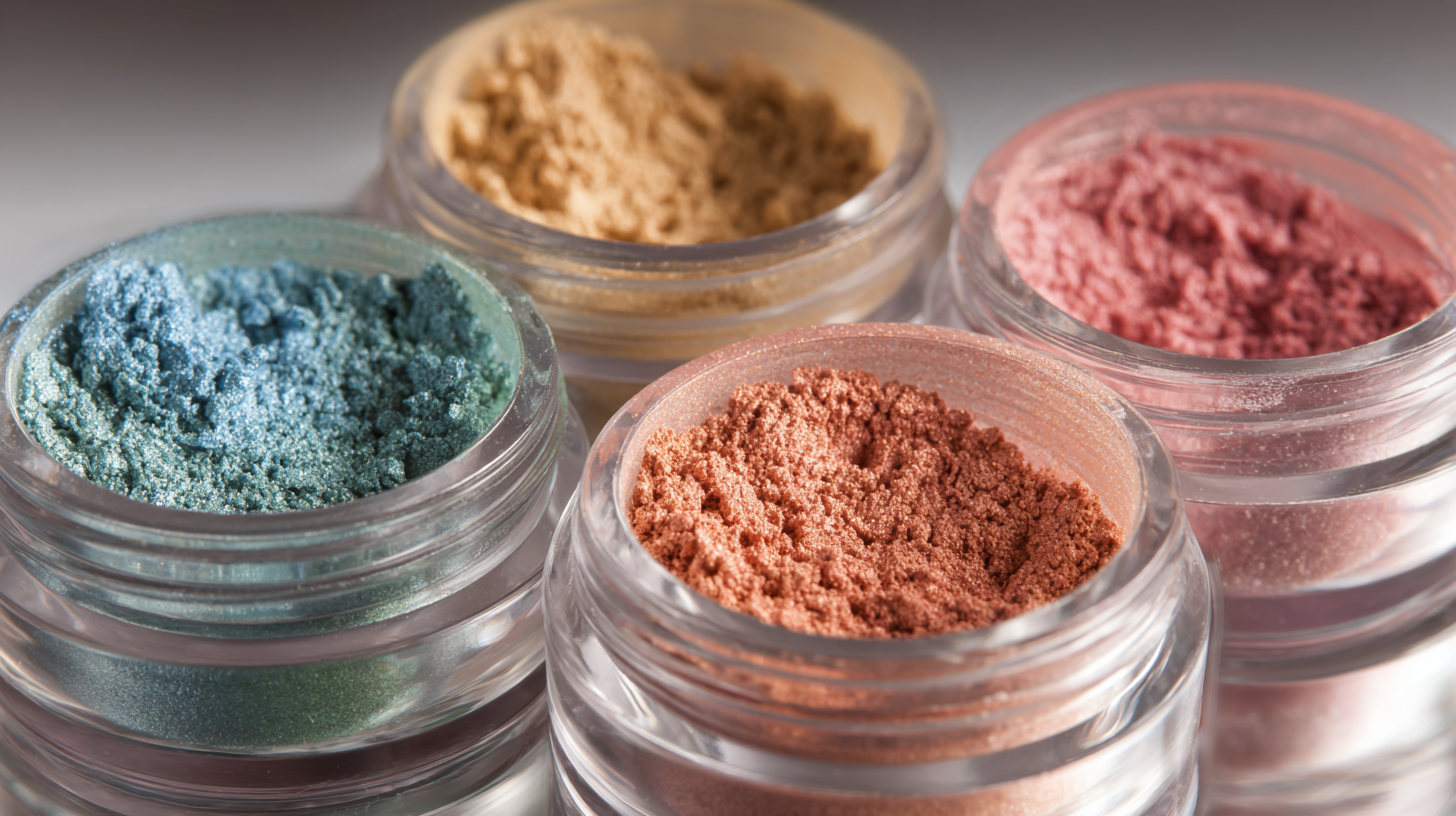In the ever-evolving world of cosmetic formulations, the demand for innovative and visually striking ingredients is at an all-time high. One such ingredient that has captured the attention of formulators and beauty enthusiasts alike is Eye Candy Mica Powder. This shimmering, versatile powder not only enhances the aesthetic appeal of cosmetics but also plays a vital role in the formulation of high-quality beauty products.
As we navigate the future of cosmetic formulations, understanding the latest insights and trends related to Eye Candy Mica Powder will be essential for industry professionals aiming to stay ahead of the curve. This checklist will explore the key aspects of Eye Candy Mica Powder, including its applications, benefits, and emerging trends that are shaping the cosmetics landscape.

Join us as we delve into the colorful potential of this fascinating ingredient and uncover how it can elevate makeup formulations to new heights.
In the evolving landscape of cosmetic formulations, compliance with ingredient regulations has never been more critical. The recent introduction of the MoCRA regulations signifies a transformative shift for cosmetic manufacturers in the United States. Adhering to these new FDA requirements is essential not just for legal compliance but also for ensuring consumer safety. With implementation deadlines approaching, companies must prioritize understanding these regulations and adjusting their practices accordingly. The growing scrutiny on compliance reflects a broader industry trend towards transparency and accountability in cosmetic product safety.

Moreover, the ongoing developments in the beauty sector emphasize the importance of staying informed about regulatory changes. The rise in recalls due to safety hazards and non-compliance highlights the risks associated with neglecting regulatory requirements. As brands navigate these challenges, collaborating with regulatory experts can be invaluable in ensuring adherence to standards while innovating new formulations. The path to compliance, while intricate, presents an opportunity for manufacturers to reinforce their commitment to quality and consumer protection in an increasingly competitive market.
In recent years, the cosmetic industry has seen a significant shift towards sustainability, particularly in the sourcing of mica powder. Mica, known for its shimmering properties that enhance the visual appeal of makeup products, is often mined in conditions that raise ethical concerns. Consequently, brands are increasingly seeking sustainable sourcing practices that not only ensure a steady supply of mica but also prioritize the welfare of mining communities. Companies are collaborating with suppliers who adhere to responsible mining practices, promoting fair trade and safe working conditions for miners.
Another key trend in mica powder sourcing is transparency. Consumers are becoming more conscious of the products they use, demanding clarity about the origins of ingredients. As a result, cosmetic brands are adopting more transparent supply chains and sharing information about their sourcing processes. This includes providing details on the environmental impact of mica mining and the measures taken to mitigate any adverse effects. By investing in traceable mica sources, brands can enhance their credibility while catering to an increasingly eco-aware customer base, ultimately contributing to the long-term sustainability of both the environment and the industry itself.
This chart illustrates the key trends in mica powder sourcing and sustainability practices, highlighting the increasing demand for ethically sourced mica powders over the years.
In the rapidly evolving cosmetic industry, understanding the intricacies of global trade is crucial for success. The U.S. cosmetic market alone is projected to reach $108 billion by 2027, driven by innovation and an increasing demand for high-quality products. As brands aim to expand internationally, navigating the maze of certifications becomes essential. For instance, obtaining certifications such as ISO 22716 for good manufacturing practices can enhance a company's reputation and facilitate smoother entry into foreign markets.
 Certification processes vary significantly across regions, with the European Union and the United States having stringent regulations to ensure consumer safety. The regulatory landscape is influenced by factors such as the Clean Cosmetics Act, which emphasizes transparency and ingredient safety. Reports indicate that over 70% of consumers are more likely to purchase products from brands that disclose their certifications, making it imperative for cosmetic exporters to secure relevant accreditations. Staying informed about these certifications not only helps brands comply with local laws but also aligns them with consumer expectations, thereby driving growth in the competitive cosmetic landscape.
Certification processes vary significantly across regions, with the European Union and the United States having stringent regulations to ensure consumer safety. The regulatory landscape is influenced by factors such as the Clean Cosmetics Act, which emphasizes transparency and ingredient safety. Reports indicate that over 70% of consumers are more likely to purchase products from brands that disclose their certifications, making it imperative for cosmetic exporters to secure relevant accreditations. Staying informed about these certifications not only helps brands comply with local laws but also aligns them with consumer expectations, thereby driving growth in the competitive cosmetic landscape.
The mica supply chain has garnered increasing attention in recent years, particularly concerning ethical manufacturing practices. According to a recent report by the Ethical Trading Initiative, approximately 30% of the global mica supply is sourced from unregulated mines, primarily in India. This lack of oversight not only raises concerns about labor rights, particularly child labor, but also fosters an environment of environmental degradation. As consumers become more conscientious about the ingredients in their cosmetic products, brands are feeling the pressure to establish greater transparency in their sourcing practices.
Transparency in mica supply chains is not just a moral obligation; it is increasingly becoming a competitive advantage. A 2021 survey by McKinsey & Company revealed that 70% of consumers want brands to be more transparent about where and how their products are made. Brands that proactively disclose their sourcing methods and engage in ethical partnerships can enhance customer loyalty while mitigating reputational risks. As the beauty industry moves toward a more sustainable future, ensuring the traceability of mica through collaboration with certified suppliers and establishing robust monitoring systems could be key strategies for success.
The cosmetic industry is witnessing a remarkable transformation as formulators increasingly leverage innovative ingredients, particularly mica powder, to create textured and vibrant products. Mica, known for its shimmering quality, is becoming a staple in cosmetic formulations, enhancing both the aesthetic appeal and performance of products like eyeshadows, highlighters, and even skincare items. As consumer demand grows for safe and natural beauty solutions, brands are harnessing mica's versatility, combining it with other natural ingredients to cater to the trend of clean beauty.
Tip: When formulating with mica, consider blending it with plant-derived oils or extracts to enhance not only the color payoff but also the skin benefits of your products. Look into mica's stability under various conditions—light, temperature, and pH—to ensure your products maintain their quality over time.
Furthermore, the future of cosmetic formulations will likely see advancements in sustainable sourcing and processing of mica. As more brands pivot towards ethical practices, incorporating responsibly sourced mica into their palettes can attract conscious consumers. Innovations in this field may also include developing new color varieties and textures that align with the latest beauty trends, ensuring formulations not only captivate the eye but also promote a more sustainable beauty culture.
Tip: Stay informed about emerging trends and consumer preferences by conducting regular market research. Engage with your audience through surveys and feedback to get insights into what colors and formulations they desire, creating a product line that truly resonates with your target demographic.
